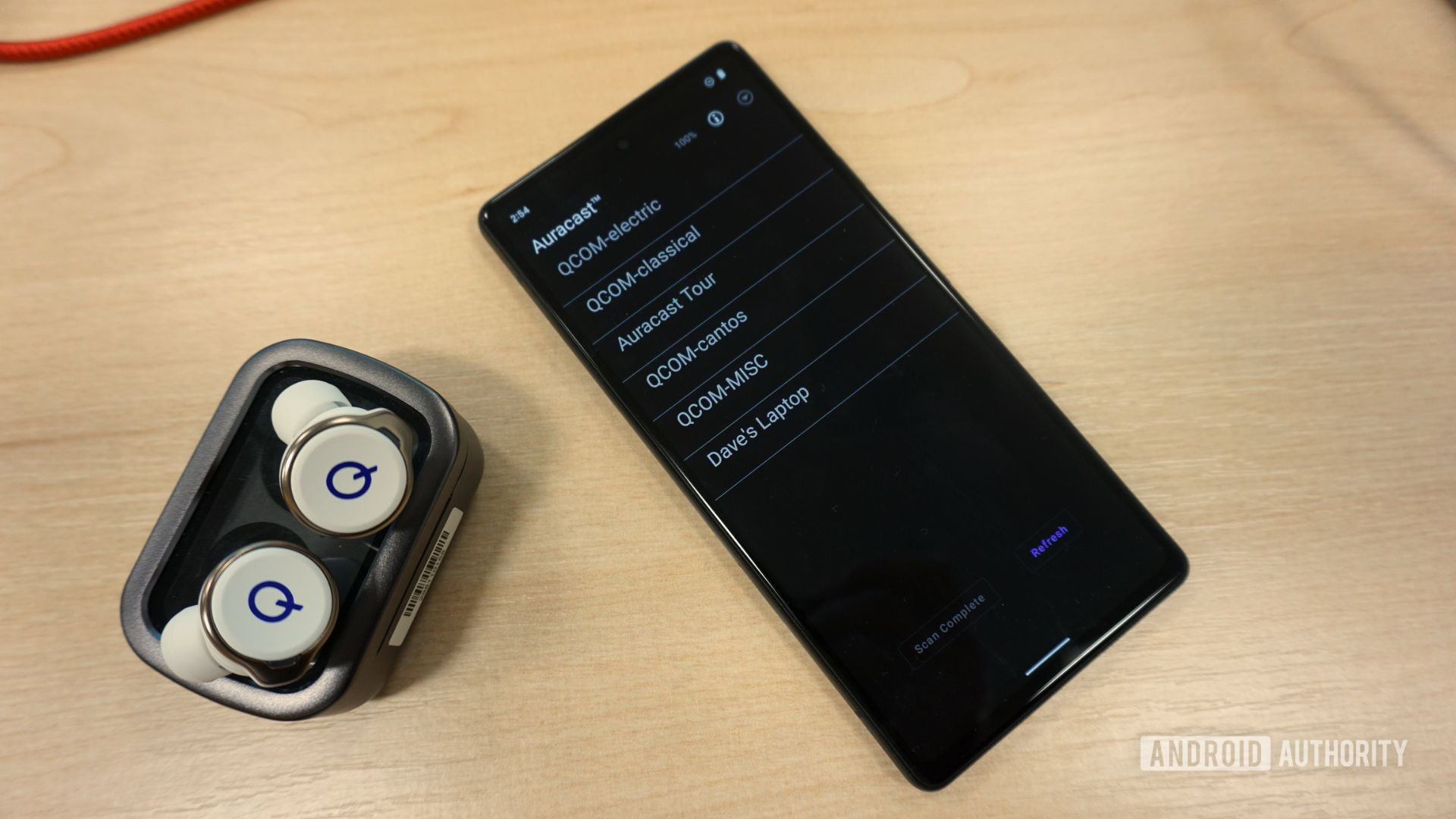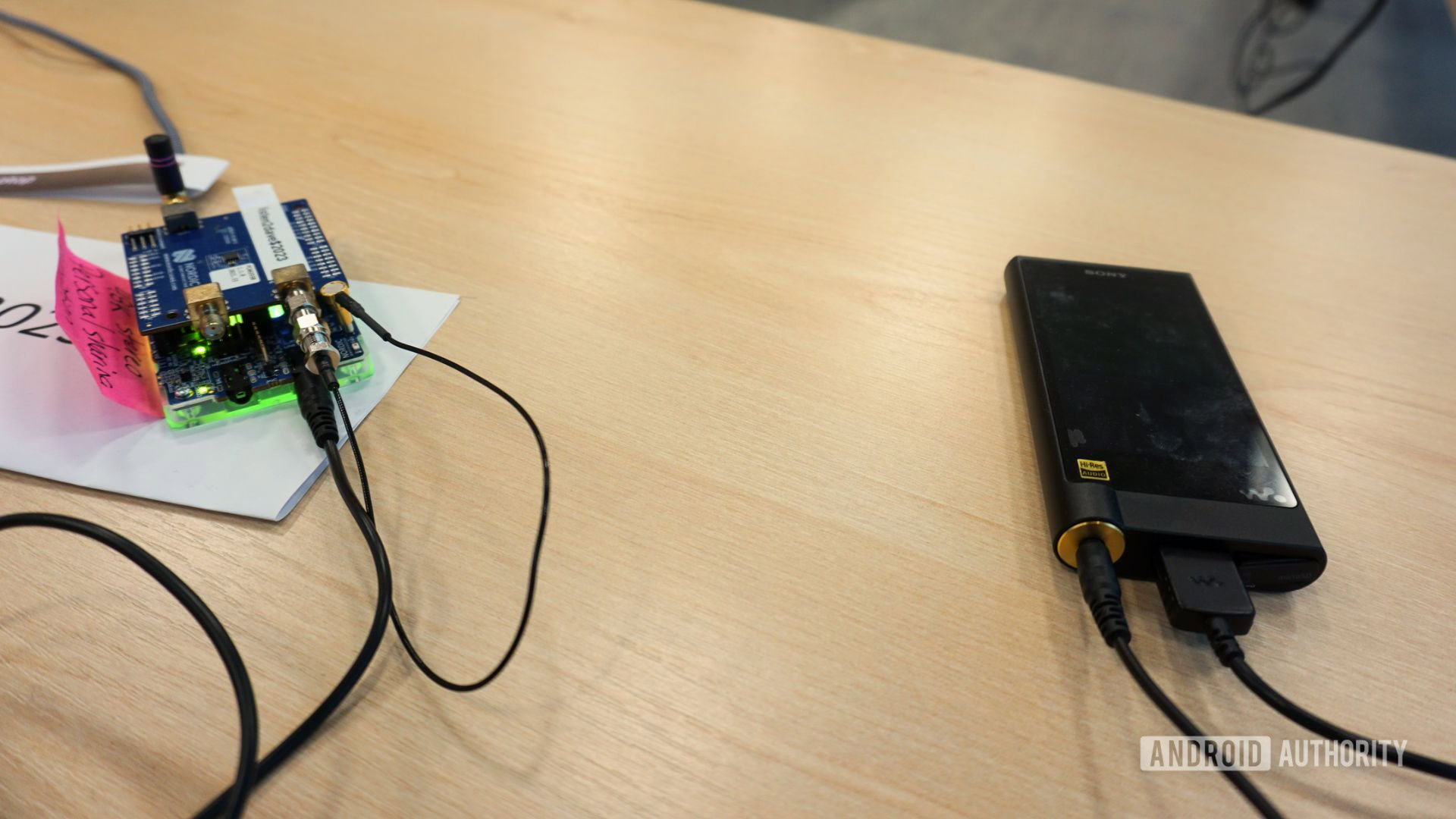Affiliate links on Android Authority may earn us a commission. Learn more.
Want lag-free gaming audio on any device? Qualcomm has a chip for that
Published onJune 21, 2023

- The QCC3086 chipset reduces Bluetooth audio latency down to 19ms – 23ms.
- The chipset is built upon the Qualcomm S3 Gen 2 Sound Platform.
- USB devices will be able to take advantage of Snapdragon Sound features.
Qualcomm has just announced a new and exciting chip — the QCC3086. This innovative hardware is designed primarily for use within third-party dongles and adapters, and aims to bring lag-free gaming audio and more than just smartphones. That means whether you’re sporting an Apple MacBook Air or the latest Samsung Galaxy S23 Ultra smartphone, you should be able to take advantage of low-latency and state-of-the-art audio features simply by plugging in a USB dongle.
The headline feature is a latency reduction to below 20ms for seamless audio streaming, but the chipset supports other Snapdragon Sound technologies too. This includes Auracast for use with phones, laptops, and smart televisions, as well as Qualcomm’s aptX audio codecs.
Qualcomm wants to bring Snapdragon Sound to PCs and more via USB.
As more users turn to mobile gaming, Qualcomm claims that 79% of consumers say lower audio lag would be a purchase driver when considering their next wireless earbuds. Latency above 50ms is considered noticeable, and typical wireless headphones experience an audio lag in the hundreds of milliseconds.
To achieve this, Qualcomm’s QCC3086 chipset uses the LE Audio LC3 Bluetooth codec to slash latency and reduce battery consumption. Built upon Qualcomm’s S3 Gen 2 Sound Platform, it’s worth noting that users will need to update both of their connected devices to the latest S3 update to experience the best results. That means, for example, updating both your smartphone and headphones. If not, users can expect latency to fall to ~48ms while using the latest chip.
Ears-on with Qualcomm’s new chip

During Qualcomm’s demonstration, I managed to get some hands-on experience with the QCC3086 chipset at work. While playing a third-person shooter and wearing Qualcomm wireless earbuds, the time between clicking the mouse to fire the gun and the sound of gunfire felt instantaneous. When I looked at the computer that tracks the latency, it showed a reading of 19ms, 1ms faster than Qualcomm’s target of 20ms. The chipset’s dedicated “Gaming Mode” uses LE Audio instead of Bluetooth Classic to reduce latency, and it shows.
Qualcomm's new chipset makes gaming audio sound genuinely real-time.
Another impressive feature is the voice-back channel which allows in-game voice communication. While running the game, I hopped on a voice call. Even though the connection quality wasn’t the best, the computer showed a latency reading of just 21ms. Additionally, Qualcomm claims latency was always kept below 23ms for game and voice-back audio while testing on other devices. So far, so impressive.
Next up is the inclusion of Snapdragon Sound features. Dotted across the room were several different audio broadcasts running Auracast via the QCC3086 chipset. These included a YouTube video running on a phone, an audio player, and a film streaming from a laptop. When navigating to the Bluetooth menu on a smartphone, a dropdown list of all the different wireless audio channels was visible. When I selected the audio stream I wanted to listen to, the earbuds immediately tuned in to that specific broadcast. Latency remained stable across each channel, and the audio lag wasn’t affected by how many devices were streaming from the same transmission. Volume control and personalization are handled by each connected device, which keeps latency to a minimum. The chipset also allows for Auracast Broadcast, which lets users easily share their audio streams with friends, family, or the public.
Qualcomm incorporates Auracast into its new chip, giving access to public audio streaming and broadcasting.
Finally, we tested the connection range and sound quality while streaming music from a phone using the QCC3086 chipset. The bitrate is scalable, providing lossless music streaming up to 1Mpbs and lossy music as low as ~250kbps. In terms of lossless audio, aptX Adaptive can play back songs at 24-bit 96kHz sample rates. Generally speaking, the connection maintained lossless quality, especially when near the chipset. The bitrate decreased in stages as the earbuds were moved further from the source device. At around roughly 10m distance, the buds were still streaming at ~250kbps, but the connection dropped out entirely when turning a corner.

But it isn’t just latency, Auracast, and lossless. The chipset hosts Bluetooth 5.4 with a dual-mode LE Audio radio, adaptive ANC capabilities, stereo audio recording, and spatial audio. When plugged into a computer, the chipset will appear as a soundcard that transmits audio.
Remember, this new technology isn’t restricted to mobiles. Glasses, laptops, game consoles, smart televisions, and the automotive industry all stand to benefit. Sadly, Qualcomm isn’t selling the little USB dongle itself; this was a demo to show what its partners can do with the technology. The chip will be available in devices by the end of the year. Watch this space.